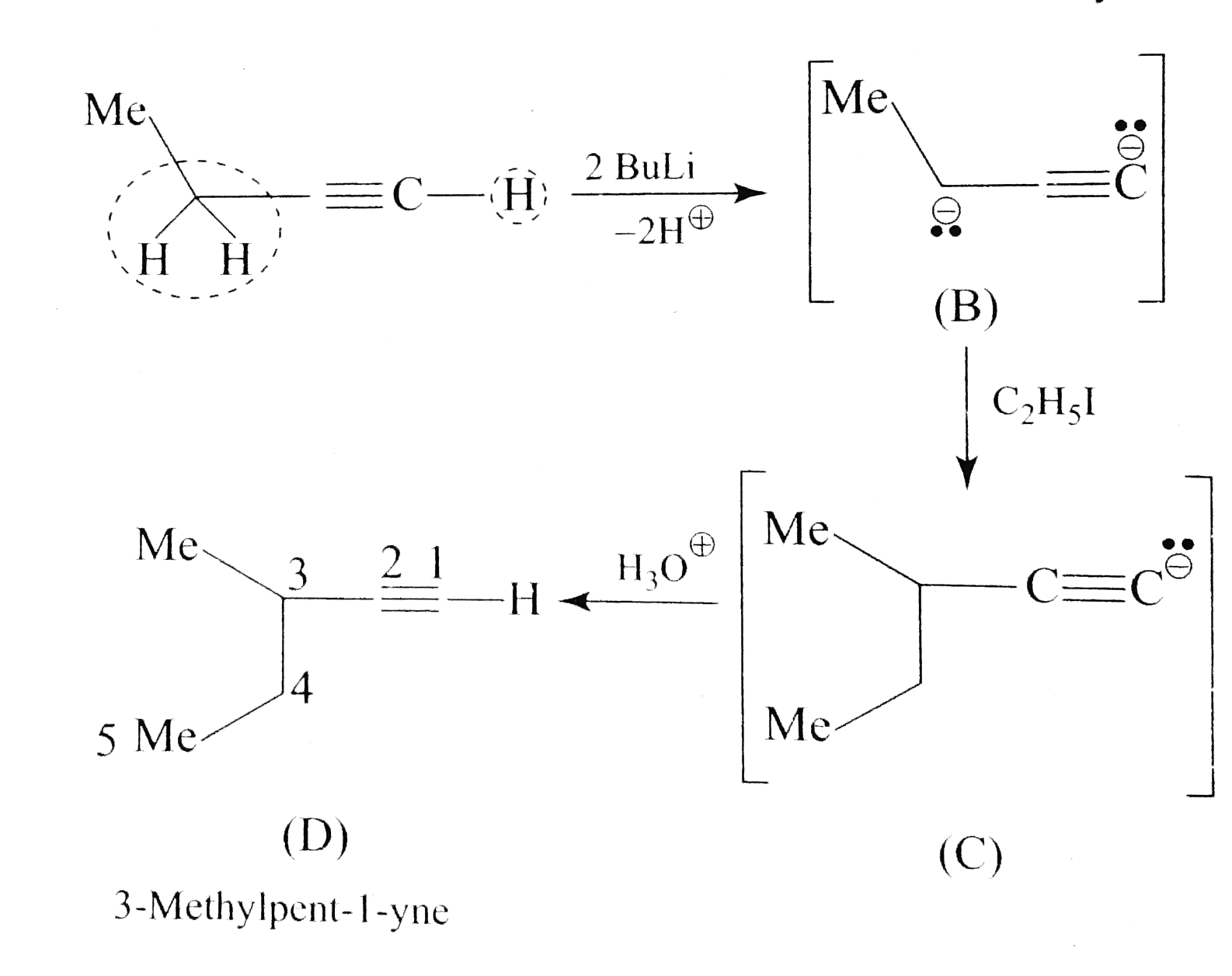Explain the formation of products (B), (C), and (D) in the following reaction. 
Two moles of a very strong base, such as butyl lithium (BuLi), convert an alkyne into dianion by the removal of the terminal H and a propargylic H.

 Propargylic H is acidic due to resonance stabilisation (extended delocalisation) of the negative charge, as shown:
Propargylic H is acidic due to resonance stabilisation (extended delocalisation) of the negative charge, as shown:

Moreover, due to the sp hybrid character of triple-bonded C, alkyne group (−C≡C−R) is EWG (electron withdrawing) and therefore is acid strengthening.
Topper's Solved these Questions
- ALKYNESBOOK - CENGAGE CHEMISTRY ENGLISHCHAPTER - ALKYNESEXERCISE - Solved Examples
24 Videos
- ALKYNESBOOK - CENGAGE CHEMISTRY ENGLISHCHAPTER - ALKYNESEXERCISE - Exercises (Subjective Type)
31 Videos
- ALKENES AND ALKADIENESBOOK - CENGAGE CHEMISTRY ENGLISHCHAPTER - ALKENES AND ALKADIENESEXERCISE - Single correct Answer
14 Videos
- APPENDIX - INORGANIC VOLUME 1BOOK - CENGAGE CHEMISTRY ENGLISHCHAPTER - APPENDIX - INORGANIC VOLUME 1EXERCISE - chapter-7 Single correct answer
1 Videos
Similar Questions
Explain the formation of (A) and (B) in the following reaction.
Oct−1−eneNBS+CCI4−−−−−−−→hv(A)(80%)+(B)(20%)
View SolutionExplain the formation of (B), (C ) and (D) in the given reaction:

View SolutionIdentify products A and B in the following reaction

View SolutionGiven the stereochemical products B, C, and D of the following reactions:

View SolutionIdentify and explain the formation of the products in the following reaction :
CH3 |CH3−C−CH2Br C2H5OH−−−−−−−→heat | CH3
View SolutionWrite the structures of A, B, C and D in the following reactions :

View Solution
Give the products (B) and (C) in the above reaction.
View SolutionIdentify the structure of the major products A,B, C and D formed in the following sequence of reactions

View SolutionWrite the structures of A, B, C, D and E in the following reactions :

View SolutionExplain the formation of the compound in the following reaction.
 .
.
View Solution
